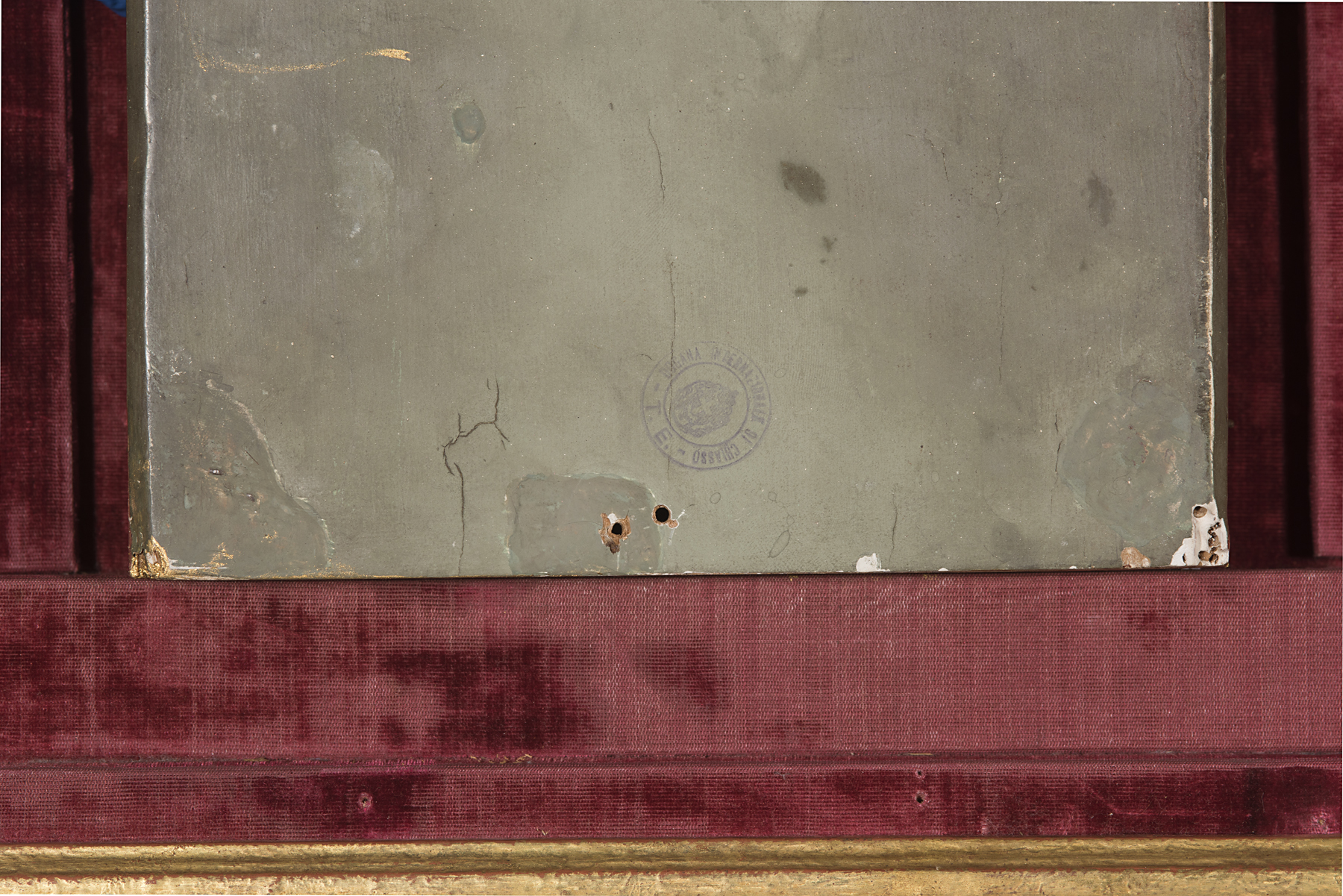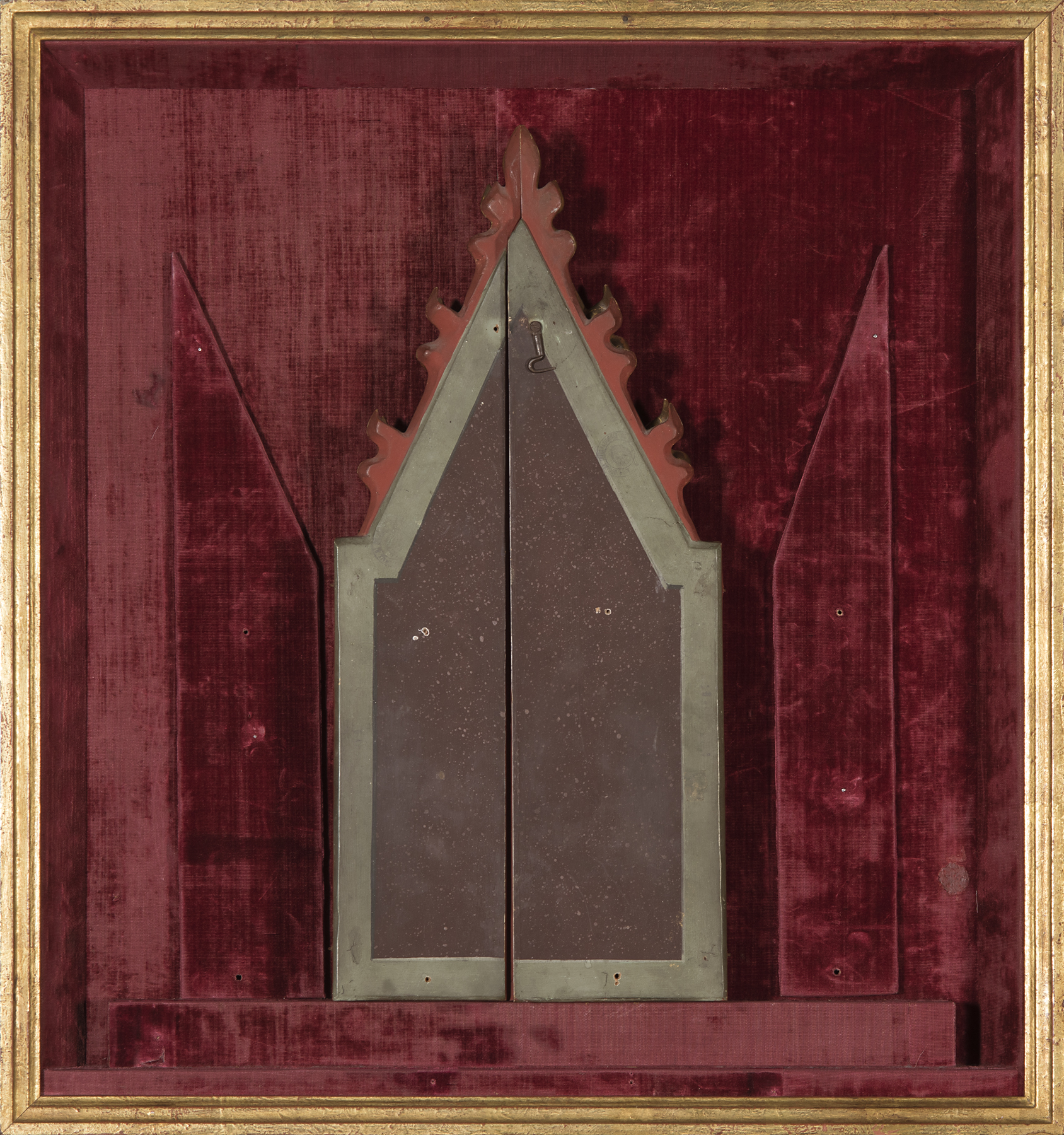Label Apr-2015:
This small triptych, or three-panel painting, was most likely intended to be used by an individual for private devotions, and its sumptuous materials would have communicated status, as well as piety. The compact size of the triptych lent itself to domestic spaces; the side panels fold inward and their beveled edges fit tightly together, indicating that the object could have been easily transported with its affluent owner during travel. The elegantly simple iconography of this painting would have made it an accessible focus of meditation for a pious individual. In the right panel, St. Peter is shown with a red book and a gold key. In the left panel, a female martyr holds a martyr’s palm and a book.
Exhibition Label:
"Corpus," Apr-2012, Chassica Kirchhoff
This small triptych, or three-panel painting, was most likely intended to be used by an individual for private devotions, and its sumptuous materials would have communicated status, as well as piety. The compact size of the triptych lent itself to domestic spaces; the side panels fold inward and their beveled edges fit tightly together, indicating that the object could have been easily transported with its affluent owner during travel. The artwork was originally paired with a matching base of gilded wood that could be removed for even more portability. The elegantly simple iconography of this painting would have made it an accessible focus of meditation for a pious individual, and the inclusion of St. Catherine and St. Peter could indicate the patron’s special affinity for these saintly intercessors.
Label Sep-2009:
This is a popular format of painting known as a triptych, which refers to its three hinged panels. Here, the center panel depicts the Madonna of Humility, a type of painting in which the Virgin Mary is seated on the ground. In medieval theology, humility was regarded as the root from which all other virtues grew, a quality that was also associated with the Virgin Mary, from whom Christ “grew.” St. Catherine of Alexandria and St. Peter appear on the triptych’s wings. The top of the painting shows Christ as Savior and also depicts the Annunciation, when the angel Gabriel told the Virgin Mary of the impending birth of Christ.
The small scale of this painting indicates that it probably functioned as a private devotional image, used primarily in a domestic setting as a visual focus for prayer and meditation. Such paintings were easily transportable and often accompanied the wealthy patrons who owned such works when they traveled or changed residence. In homes, images of the Virgin Mary and Christ (the most common subject for private devotional works) were frequently kept in the bedroom, often on top of a small altar. Because of their association with the home, private devotional works of art came to be closely associated with the religious practices of women. This is reflected in specific instructions found in domestic manuals from the 1400s on how to treat such images.
Label Date Unknown:
This small triptych, or three-panel painting, was most likely intended to be used by an individual for private devotions, and its sumptuous materials would have communicated status, as well as piety. The compact size of the triptych lent itself to domestic spaces; the side panels fold inward and their beveled edges fit tightly together, indicating that the object could have been easily transported with its affluent owner during travel. The artwork was originally paired with a matching base of gilded wood that could be removed for even more portability. The elegantly simple iconography of this painting would have made it an accessible focus of meditation for a pious individual, and the inclusion of St. Catherine and St. Peter could indicate the patron's special affinity for these saintly intercessors.


